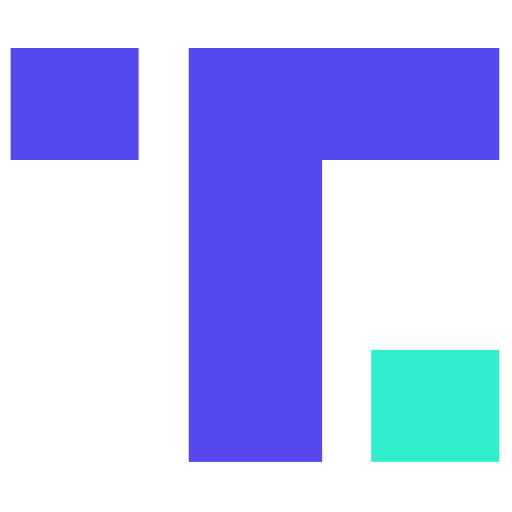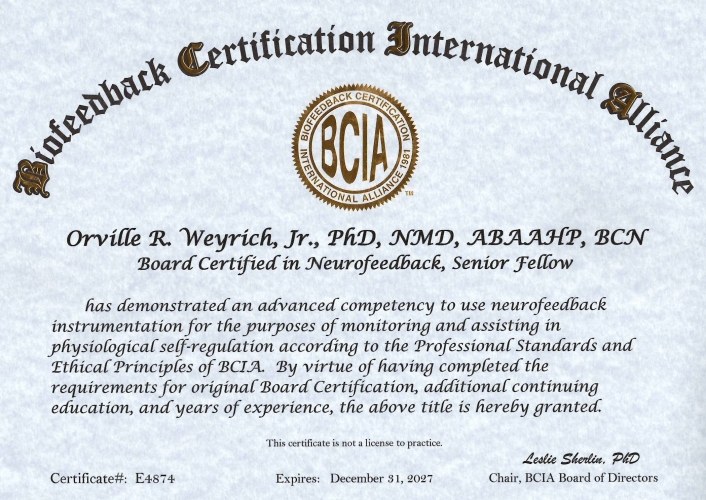How Neurofeedback Works
Neurofeedback is a kind of biofeedback that looks at brain waves, and helps the patient learn how to "restructure" the activity of his/her own brain to normalize or optimize brain function.
Neurofeedback is based on the principle that a person can learn to control basic autonomic functions of their own body, including mental state, sympathetic, parasympathetic, and muscle tone. This is accomplished with the help of sensitive electronic devices that measures brain-wave activity and presents it back to the patient. This enables the patient to learn to exert conscious control over these basic indicators of mental function. This is a form of operant conditioning.
Not only does neurofeedback allow the patient to control their own mental state, but it also can establish new habits which persist after the training sessions finish, due to the phenomenon called "neuroplasticity", in which the brain can remodel itself if given the proper guidance. This is in contrast to most pharmaceutical approaches, where drugs must be used forever to maintain changes.
Some researchers have suggested that one of the ways in which neurofeedback works is by increasing blood flow to underperforming portions of the brain.
Dr. Weyrich believes that neurofeedback may be especially effective if the causes of the degeneration or malfunction can be identified and eliminated. This is a basic tenet of Naturopathic Medicine - that if the "obstacles to cure" are eliminated, the natural homeostatic mechanisms of the body can in most cases restore health.
An important aspect of conventional neurofeedback is that the patient is isolated from power lines, and conventional techniques do not inject any signal into the brain. The computer interface only passively monitors the electrical activity produced by the brain. This is in contrast to the High Performance Neurofeedback technique, which is discussed separately.
Conventional Neurofeedback Training
Typically, the process starts with a full-head Quantitative Electroencephalogram (QEEG) of the brain with eyes open and also eyes closed. This QEEG looks at the power and frequency of brain waves at each of 19 different standard location on the scalp, and then the patient's QEEG parameters are compared with a normative database of age and gender-matched "normal" control population parameters. The deviations in the the parameters between the patient and the normative controls is then reported to the neurofeedback practitioner, who then develops an individualized training protocol to train the power of the patient's brainwaves up or down at specific frequencies at each location on the head where the patient's parameters deviate from the normative controls, with special attention to parameters that deviate by many standard deviations.
Following the QEEG, a number of training sessions (typically up to 25) are conducted one to three times a week to give the patient operant training to move their own brain waves toward the "normal" parameters.
It may take a number of training sessions before benefit is noticed, but generally some improvement may be noticed before 25 sessions, and in some cases, less than 25 sessions may produce the desired results. After each 25 sessions, a case review is done, and the QEEG may be repeated to visualize what changes have been achieved and to create an updated training protocol.
While prices may vary, the patient should typically budget at least $500 for each QEEG, and $75 for each training session. The High Performance Neurofeedback technique does not require costly QEEGs and tends to be more rapidly effective, which gives considerable cost savings.
Note that neurofeedback and QEEG testing are not covered by most insurance policies, but may be eligible for payment out of Health Care Savings Accounts.
Dr. Weyrich's Qualifications
According to a press release from BCIA, The Biofeedback Certification Institute of America ([BCIA]) is pleased to announce that Dr. Weyrich, PhD NMD is Board Certified in Neurofeedback (BCN). Dr. Weyrich joins an elite group of professionals who have met the education, clinical and exam criteria required in order to become a certified provider of general biofeedback services.
Dr. Weyrich has also recently participated in a neurofeedback residency program at the Attention Deficit Disorder Clinic in Scottsdale, AZ, under the preceptorship of Bob Gurnee [Gurnee].
Dr. Weyrich, of Scottsdale, AZ, has a state-licensed naturopathic medical practice that provides services to the greater Phoenix, Arizona area. Biofeedback services offered include stress reduction, performance enhancement, and the treatment of Attention Deficit (Hyperactivity) Disorder. Other disorders in which Neurofeedback (EEG biofeedback) have been found useful include the treatment of epilepsy and traumatic brain injuries.
Certification demonstrates professionalism and adherence to carefully developed standards as a health care provider. Procedures are consistent with the Department of Health & Human Services Guidelines, giving credibility and evidence that practitioners maintain knowledge and skill levels.
Health care professionals who achieve BCIA Certification demonstrate commitment to professionalism by completing basic degree and educational requirements, learning to apply clinical biofeedback skills during mentorship, and passing a written examination.
The Biofeedback Certification Institute of America (BCIA) is the only institute recognized worldwide granting certification to biofeedback practitioners. BCIA was established in 1981 with the mission of protecting the general public by establishing strict standards for biofeedback practitioners.
Dr. Weyrich offers these neurofeedback protocols as a complement (adjunct) to other therapies, as opposed to an alternative to (replacement for) other therapies.







